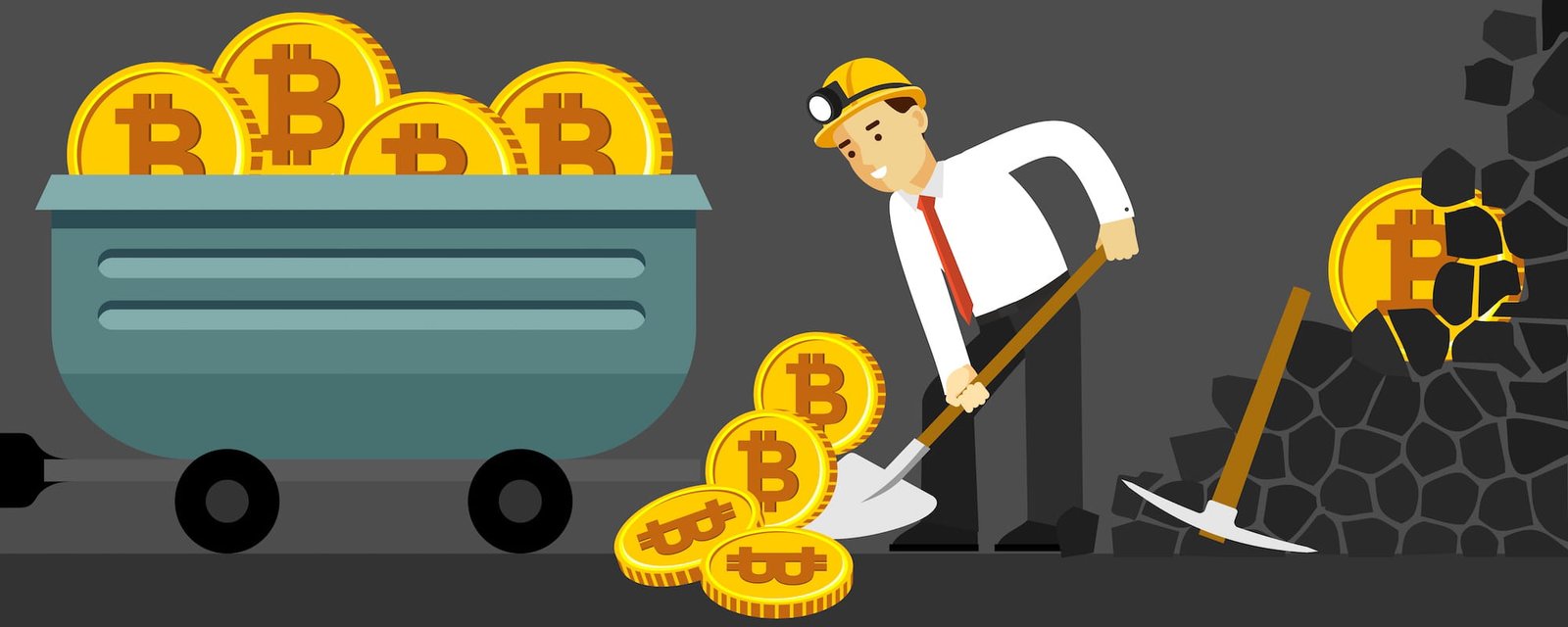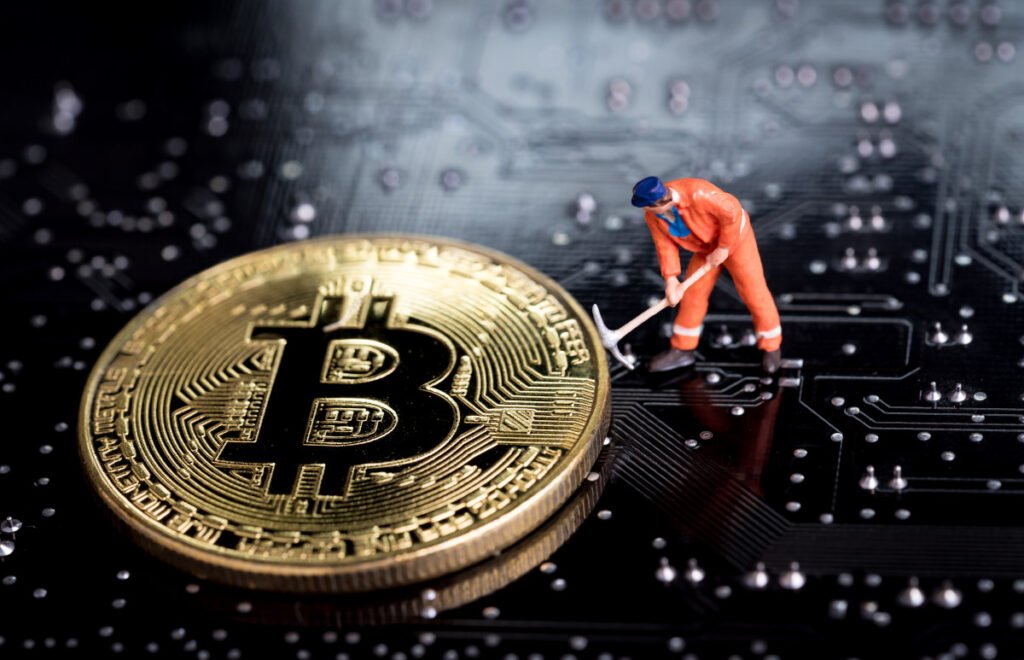Bitcoin mining represents a critical function in the decentralised infrastructure of blockchain technology. Since its inception in 2009 with the launch of the Bitcoin network by Satoshi Nakamoto, mining has evolved from a niche interest pursued by early adopters to a global industry influencing energy markets, regulatory policy, and technological innovation. At its core, Bitcoin mining is more than just the generation of new coins; it is a process that validates transactions, secures the network, and sustains the fundamental principles of decentralisation and trustless consensus.
The Mechanics Behind Bitcoin Mining
To understand Bitcoin mining, it’s essential to grasp the role of proof-of-work (PoW), the consensus algorithm that enables Bitcoin to function without centralised oversight. Mining involves solving complex cryptographic puzzles using the SHA-256 hashing function. Every 10 minutes, miners compete to find a hash that meets the difficulty target, a value dynamically adjusted based on network performance. The successful miner earns the right to add a new block to the blockchain and is rewarded with a predetermined number of bitcoins along with accumulated transaction fees.
Initially, Bitcoin mining was possible on standard CPUs, but the increasing difficulty and competitiveness of the process led to the adoption of GPUs and later FPGAs. Today, mining is dominated by Application-Specific Integrated Circuits (ASICs), such as the Antminer S19 or WhatsMiner M30S, designed solely to perform SHA-256 calculations with maximum efficiency. This specialisation has driven the industrialisation of mining, with large-scale operations often located in areas with cheap electricity and favourable environmental conditions.
Mining Economics and the Halving Cycle
Bitcoin’s economic model is built on scarcity and controlled issuance. The maximum supply is capped at 21 million coins, and approximately every four years, a halving event reduces the block reward by 50%. When Bitcoin launched, the block reward was 50 BTC; as of 2024, it stands at 3.125 BTC. This diminishing reward schedule affects miner profitability and market dynamics.
Mining profitability hinges on several variables, including hardware efficiency, electricity cost, and Bitcoin’s market price. In high-cost electricity regions, even the most efficient ASICs may struggle to break even, especially during bear markets. Conversely, miners operating in areas with access to renewable energy or surplus power—such as hydroelectric stations in Canada or geothermal energy in Iceland—can maintain profitability even under tighter margins.
Mining Pools and Network Distribution
Given the probabilistic nature of mining, individual miners rarely find blocks on their own. To address this, mining pools emerged, allowing participants to combine their computational power and share rewards proportionally. Pools such as Foundry USA, Antpool, and F2Pool collectively account for a significant share of the total Bitcoin hashrate. While this arrangement offers predictable payouts, it also raises concerns about centralisation, as a handful of pools could theoretically exert undue influence over the network.
Efforts to countercentralization include the development of protocols like Stratum V2, which give individual miners more control over block templates, thereby redistributing decision-making power within the pool framework. Advocates argue that such measures are vital to preserving Bitcoin’s decentralisation ethos.
Energy Consumption and Sustainability
Bitcoin mining’s energy consumption has sparked considerable debate. Critics often cite the network’s high power usage—estimated at over 100 terawatt-hours annually—as environmentally damaging. The Cambridge Bitcoin Electricity Consumption Index (CBECI) tracks this consumption and provides transparency into mining’s global footprint.
However, defenders of Bitcoin mining argue that it can accelerate the adoption of renewable energy. Mining operations can act as flexible load buyers, consuming electricity during periods of excess generation. This capability is especially valuable for intermittent sources like wind and solar. Projects in Texas, for example, demonstrate how mining can stabilise grids and improve the economics of renewable infrastructure by absorbing surplus power that would otherwise go unused.
Regulatory and Geopolitical Implications
Regulatory attitudes toward Bitcoin mining vary globally. China, once home to over 65% of global mining activity, enacted a sweeping ban in 2021, citing environmental and financial risks. This exodus reshaped the global mining map, with the United States, Kazakhstan, Russia, and Paraguay emerging as prominent new centres.
In the U.S., states like Texas and Wyoming have welcomed miners with open arms, offering low electricity prices and regulatory clarity. In contrast, New York imposed a moratorium on certain mining operations due to environmental concerns. The legal status of mining continues to evolve, influenced by national energy policies, environmental agendas, and broader digital asset regulations.
Technological Advancements in Mining
Beyond hardware improvements, software development plays a vital role in mining performance and sustainability. Open-source tools like CGMiner and BFGMiner allow for fine-tuned control of mining rigs, enabling operators to optimise temperature management, overclocking, and energy usage.

Upgrades to the Bitcoin protocol, like the Taproot soft fork that activated in 2021, indirectly influence mining by altering the structure and validation of transactions. Taproot enhances privacy and scripting capabilities, allowing miners to prioritise transactions with complex scripts more efficiently. These upgrades demonstrate the dynamic relationship between protocol development and mining strategy.
Final thoughts
The future of Bitcoin mining may hinge on its integration with clean energy initiatives and advancements in AI-driven optimisation. Companies like Marathon Digital Holdings and CleanSpark are pioneering efforts to align mining operations with ESG (Environmental, Social, and Governance) frameworks. This alignment is appealing to both institutional investors and regulators. As Bitcoin approaches its final issuance phase over the next century, transaction fees will play an increasingly important role in incentivising miners, prompting an ongoing discussion about network security and fee market design.

















